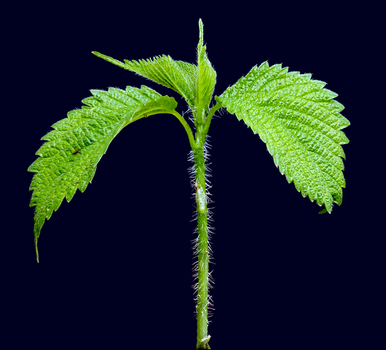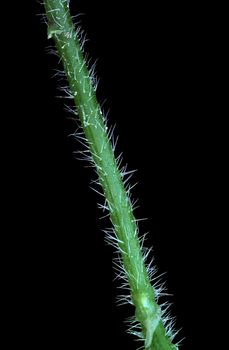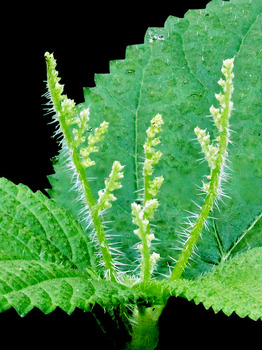Stinging Nettle
Classification:
Family: Urticaceae, nettle family
Genus species: Urtica dioica
Leaves:
Leaves are heart-shaped with strongly serrated edges. Leaves and stems are covered with stinging hairs.
Flowers:
Male flowers grow in small loose clusters near the top of the plant. Female flowers grow in dense strand-like clusters off of the leaf axils.
Common Uses and Interesting Facts:
Leaves are flavorful and high in nutrients. Cooking, crushing, or chopping disables the stinging hairs. Stinging nettle has been recommended to relieve the pain of rheumatism.
More Information:
A painful skin rash is caused by brushing up against the plant. Touching the plant breaks delicate hairs and releases three chemicals: a histamine that irritates the skin, acetylcholine that brings on a burning sensation, and hydroxytryptamine that activates the other two chemicals.
Etymology
The genus name Urtica is from the Latin for "stinging." The species name dioica is from the Latin for "two houses," referring to the dioecious nature of the plant.
Photos:


